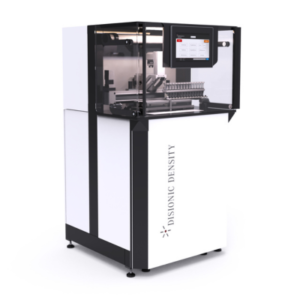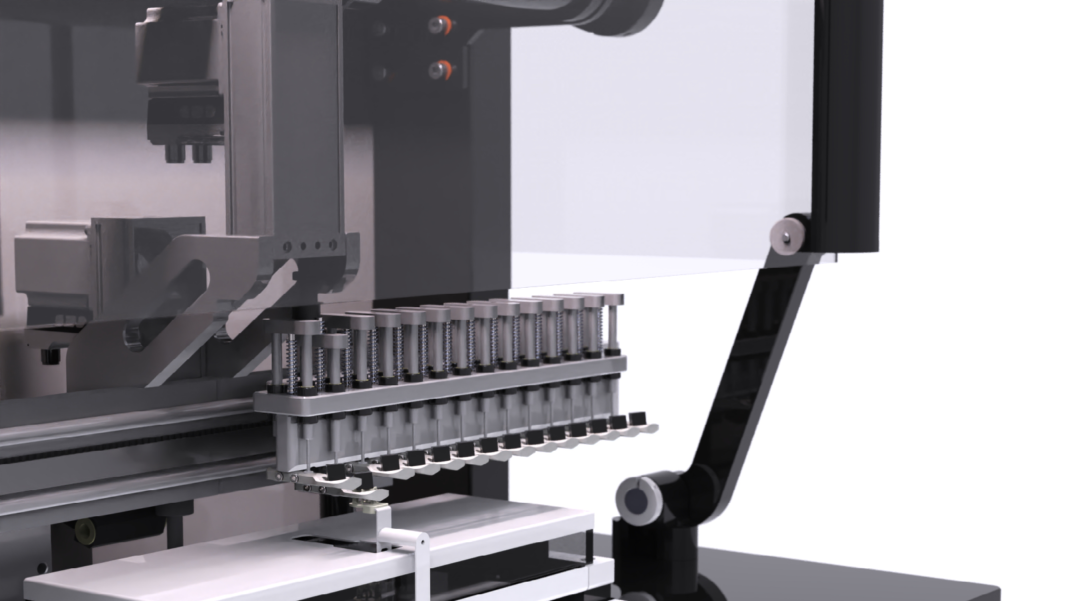Despite my modest experience in this industry, I am always intrigued when I hear a terminology that sounds like new music to my ears. I guess what I find the most intriguing is that this new terminology aims to address an issue we all know – or we are supposed to all know.
Today, the new terminology I am referring to is “density determination technology”. Developed by Dimensionics Density – a company that has built expertise in measuring and testing technology –, this solution designed for AM, would contribute to the automation of the AM process chain.
Dimensionics aims to enhance the area of part validation, with finished AM parts and components now routinely used in critical end-use applications.
“Our technology plays straight into the need for automation in the area of validation and quality control of AM parts, and we have launched an array of tools focussed on the determination of AM part density. For AM to continue to disrupt the manufacturing paradigm, the entire AM process chain needs to move towards automation. Because of this, our density determination solutions are fully automated, and of vital importance, are designed to be used in production settings, not just in the laboratory. As we all know, AM stimulates design freedom as it is agnostic to part complexity. As geometric complexity increases, density determination of AM parts becomes more difficult using commonly used density determination technologies. Dimensionics Density’s solutions can easily determine the density of freeform parts and highly complex AM parts and can measure density repeatably to 0.001 g/cm3”, Philipp Pruesse, Head of Sales at Dimensionics Density, comments.
What’s the problem in part validation?
If you’re well familiar with the fabrication process of 3D printed parts, then you probably know that porosity in 3D printed parts can weaken their mechanical strength and stability, leading to failure under stress. Moreover, porosity can affect the thermal and electrical properties of the parts and make them less resistant to high temperatures, corrosives, and other environmental factors. And it can also limit the ability of parts to hold liquids, gases, or other materials, which can impact performance in specific applications.
Dimensionics explains that with their solution, the measuring process is automated. It occurs right after the samples are inserted into the universal component carriers. Environmental factors that can affect the density measurement and control systems, are assessed when calculating the density from the measurement data.
According to the machine manufacturer, this enables accuracies to be achieved in the determination of the density, which cannot typically be realised in an industrial production environment.
What about the solution?
The machine uses the Archimedes Principle. The density of the test object is determined by weighing it in two different media. The first measurement is usually made in air, the second measurement in a defined liquid medium with a known density.
According to Dimensionics , a pivotal factor for the accuracy of the result, is the positioning on the scale. Deviations from the centre of mass and resulting off-centre measurements of the component will lead to strong deviations. That’s the reason why the common manual Archimedes measurement solutions are not viewed favourably across industry.
“To counteract this problem and to ensure the repeatability of the measurements, Dimensionics Density offers a universal carrier which can transport most parts, and which can be easily adapted if necessary for more complex geometries. The determined density is compared with the desired specifications, and so qualitatively more accurate assumptions can be made about the density of complex components. With a cycle time of less than 2 minutes per component and the possibility of inspecting up to 18 components simultaneously in one inspection process as standard, the Dimensionics Density solution supports the optimisation and efficiency of manufacturing processes,” Pruesse explains.
Dimensionics Density’s density determination technology is non-destructive which means it can serve for the verification of parts that conform to density requirements and those that don’t in a speedy, precise, and cost-effective manner.
Remember, you can post job opportunities in the AM Industry on 3D ADEPT Media free of charge or look for a job via our job board. Make sure to follow us on our social networks and subscribe to our weekly newsletter : Facebook, Twitter, LinkedIn & Instagram ! If you want to be featured in the next issue of our digital magazine or if you hear a story that needs to be heard, make sure to send it to contact@3dadept.com.






